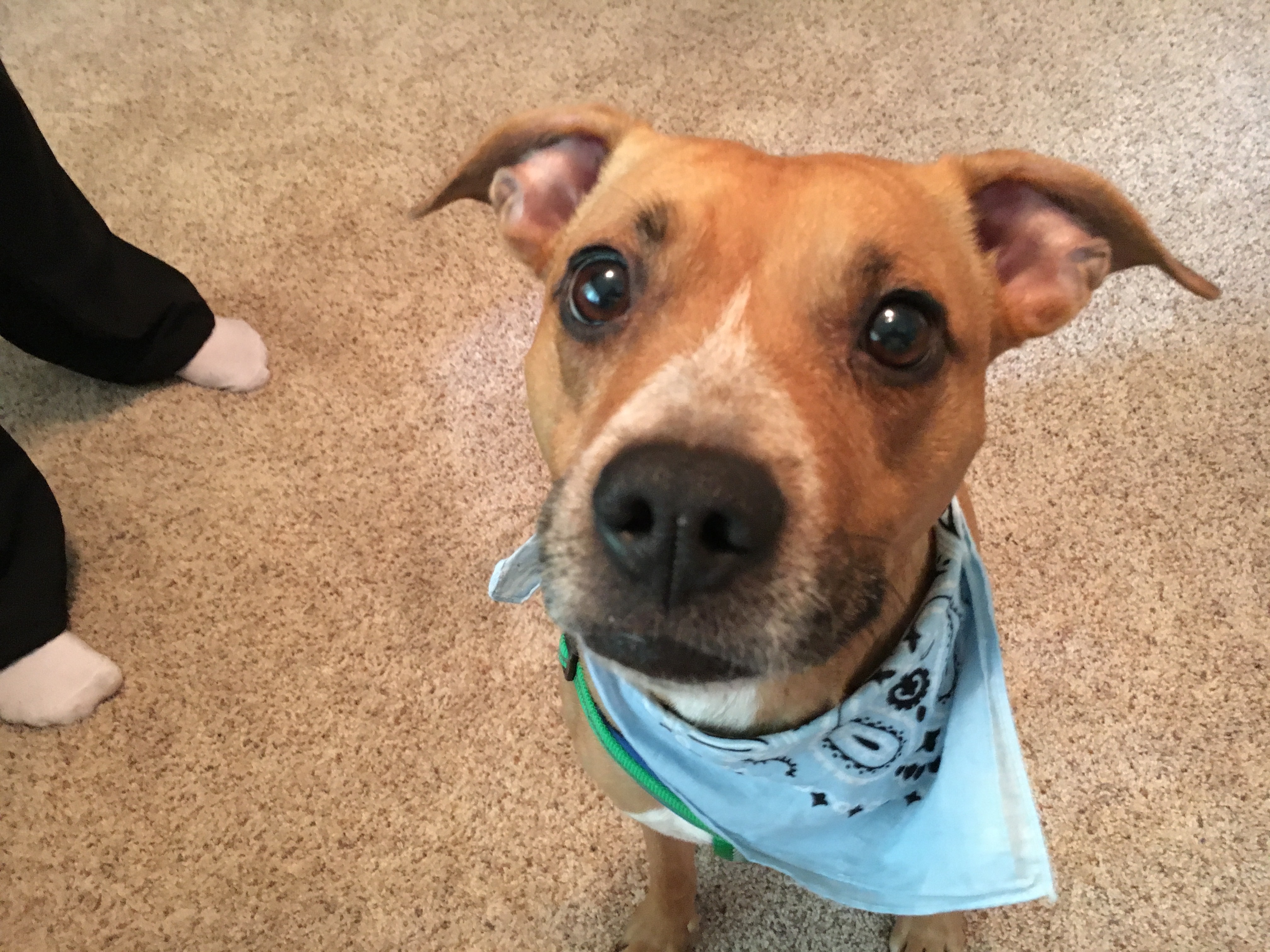Teaching a Smart Pit Bull to Stay to Help With Her Separation Anxiety
By: David Codr
Published Date: August 17, 2018
For this Fremont dog training session we helped a beautiful 6 year-old Pit Bull named Fayha get over her separation anxiety by teaching her to stay.
Because Fayha has developed a fear of the kennel and destroys things when left alone due to her separation anxiety, her guardian had her sequestered in the laundry room in the basement. This is where the kennel was located and is likely a contributing factor for this dog behavior problem.
Dogs are very social creatures and one of the worst punishments for a dog is to be excluded from their people. So it’s important that you keep a dog kennel in a room that you hang out in otherwise it can easily get the impression that you’re punishing it.
When I sat down with Fayha and her guardian, I learned that in addition to the separation anxiety, she had been getting progressively more aggressive around unknown dogs and people. As a dog behaviorist, I find this is often the case when dogs lack rules and structure in their daily lives. After discussing the situation with Fayha’s guardian, I’m pretty sure that was the case here.
I suggested a number of tips that will help the dog start to see and identify the human as being in the authority or leadership position. If a dog sees its humans as peers or someone they need to protect, they can very easily get frustrated when the humans don’t listen to them or if they think the humans are going to put themselves in danger. This often leads the dog to lashing out and acting aggressively to try to keep their humans safe or in possession of them.
After wrapping up the discussion on the importance of structure, I showed the guardian how she can start to ask Fayha to earn affection by sitting, coming or laying down. I like to call this petting with a purpose. It is super easy as well as amazingly effective.
I also suggested the guardian start rewarding desired actions and behaviors which is what I like to call passive training. To dogs, any attention is validating. Many people inadvertently train their dogs to offer unwanted behaviors because that is the quickest way to get the human’s attention. By focusing on rewarding the dog anytime it offers a desired behavior like a set, come, lay down etc., we can motivate the dog to start offering these behaviors instead of the ones we dislike.
Dogs who suffer from separation anxiety often have lower self-esteem. A great way to help a dog get over this problem is to build up their confidence through the acquisition of new skills. I showed the guardian how to teach Sarah to focus on command and suggested that she try to teach her dog a new trick or commands a week for the next month or two. The more commands a dog knows, the more confident it is and the more ways the human has to redirect their dog’s attention.
Many dogs who have a separation anxiety problem develop it because they don’t practice being alone. We often refer to these as Velcro dogs and Sarah was certainly in that camp. She would follow her guardian around everywhere to avoid being alone.
A great way to help a pooch practice being alone is to train the dog to stay. I pulled out my camera and handed it to the guardian so we could create a free dog training video on how to teach any dog to stay.
Once the guardian gets Fayha to stay for 5 minutes, she can move to distance. Once at this stage, she can start helping Fayha practice staying alone in one room when the guardian gets something to drink, a snack, use the bathroom, etc. The idea is to gradually increase the duration the dog is alone so they practice being calm in that situation.
The guardian may also need to do some positive kennel training. I share a number of tips to help a dog get over a fear of the kennel in this link.
To address Fayha’s habit of getting upset when people ring the doorbell, I showed the guardian how to use classical conditioning to teach a dog to move away from the door when the doorbell is rung.
By the end of the session, Fayha was able to stay in place for 10 times as long as when we first started. What a smart cookie. This is another example of why the guardian should try to teach some new tricks; she should pick them up quickly.
To help the guardian remember all the dog behavior help and suggestions I made in this in home dog training session, we shot a roadmap to success video.
Categorized in: Dog Behavior


